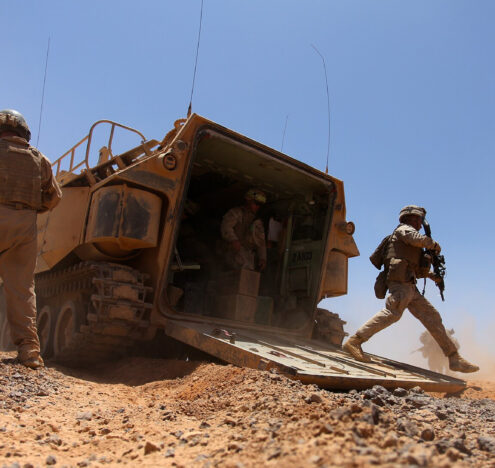This analysis was featured in Critical State, a weekly newsletter from Inkstick Media and The World. Subscribe here.
When refugees leave home, they exit any reasonable semblance of health infrastructure. For many, this may be a distinction without substance, as war or conflict has already obliterated hospitals, municipal water, and stability before making the call to leave. Still, departing from one country for another to settle safely in a new home after the old one has become inhospitable means taking on tremendous risk. Even in the best-case scenarios, refugees are often settled in subpar living conditions.
In “Assessment and Prevention of Lead Poisoning in Refugee Populations,” authors Lois Wessel and Laura Andreko outline the likelihood that new arrivals come with lead poisoning and explain how health systems can better meet the needs of refugees.
Lead is encountered in a host of ways in daily life. While many countries don’t use leaded gasoline, it was common in Afghanistan until a decade ago, and lingering lead persists near motorways. Depending on the environment a person comes from, they may have encountered lead through ceramics, jewelry, kinds of makeup, paint, pipes, and even the raw material of war.
As countries like the United States face the arrival of more refugees, they should take steps to ensure that health harms in new arrivals can be treated.
“Human Rights Watch warned that a refugee camp filled with Afghan and Syrian refugees in Greece was constructed on a former military firing range site and posed a serious risk to the refugees residing there. Anecdotally, the authors of this article have treated patients from El Salvador who suffered bullet wounds during that country’s civil war of the 1980s for elevated lead levels that were found to come from bullet fragments,” the authors write. Clinics treating refugees should ask about shrapnel and bullet fragments, which can persist in the bodies of those fleeing war and cause long-term health risks.
While bullets cause the most direct harm during and after a conflict, the lack of infrastructure abroad and the poor resources available for resettlement in the United States can lead to people, especially children, testing with higher blood lead levels than found at initial intake.
“Refugee children may arrive with high blood lead levels and may be placed in housing with high lead risks from deteriorating paint or contaminated soil,” write the authors. “In a review of blood lead levels in refugee children in the U.S. from 2010–2014, authors identified associations between [Elevated Blood Lead Levels] and overseas exposures, nutritional deficits, and use of imported products containing lead including food, toys, jewelry and cosmetics, as well as resettlement in older homes with lead paint in the U.S.”
Ultimately, as countries like the United States face the arrival of more refugees, they should take steps to ensure that health harms in new arrivals can be treated. Housing that does not exacerbate injury is essential. After all, the health and educational gains from reduced exposure to lead are phenomenal.
“Climate disruptions, war, and economic crises, as well as the history of the United States in offering refuge to populations in need, indicate that refugee resettlement will continue in the U.S. for decades,” conclude the authors. “Additionally, refugee families should receive culturally and linguistically appropriate education on potential lead hazards and ways to reduce exposures.”




















